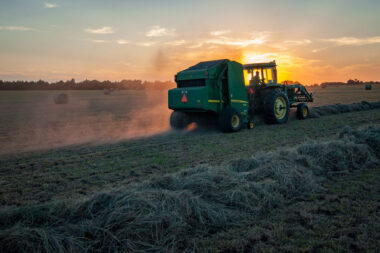In modern agriculture, the quest for sustainable and eco-friendly practices has led to the emergence of innovative solutions that leverage nature’s own mechanisms. Among these solutions, insect-based fertilizers stand out as a promising avenue for organic nutrient recycling, offering a novel approach to enriching soil fertility while minimizing environmental impact.
Insect-based fertilizers represent a paradigm shift in agricultural practices, moving away from synthetic chemicals and towards sustainable, nature-inspired solutions. By harnessing the power of insects, these fertilizers not only provide essential nutrients to plants but also contribute to organic waste management and ecosystem balance.
The Role of Insects in Nutrient Recycling
Insects serve as nature’s efficient recyclers, playing a crucial role in breaking down organic matter and returning essential nutrients to the ecosystem. For example, dung beetles are instrumental in decomposing animal waste, effectively recycling nutrients back into the soil. Similarly, decomposer insects like maggots and larvae contribute to the decomposition of dead plant material, facilitating nutrient cycling in forests and agricultural fields.
Utilizing Insect Frass as Fertilizer
Insect frass, the excrement produced by insects as they feed on organic matter, is a potent source of nutrients for plant growth. Unlike traditional fertilizers, insect frass contains a balanced blend of nitrogen, phosphorus, potassium, and micronutrients in a form that is readily available to plants. For instance, farmers in regions like Africa and Asia are increasingly turning to insect frass as an organic alternative to synthetic fertilizers, benefiting from its ability to improve soil fertility and enhance crop yields.
Cultivating Insects for Fertilizer Production
The cultivation of insects for fertilizer production involves carefully managing their growth and development to optimize frass production. For example, black soldier flies (Hermetia illucens) are raised in controlled environments using organic waste materials such as food scraps, brewery waste, and agricultural residues. These insects are highly efficient at converting organic matter into frass, making them ideal candidates for large-scale fertilizer production.
Production Process
The production process of insect-based fertilizers typically begins with the selection and cultivation of insect species suited to the local environment and available feedstock. For instance, in regions with abundant agricultural residues, mealworms (Tenebrio molitor) may be cultivated using wheat bran or rice husks as feed. The insects are reared in specially designed facilities that provide optimal conditions for growth, including temperature, humidity, and ventilation control.
Once mature, the insects are harvested, and their frass is collected through sieving or mechanical separation methods. The collected frass undergoes additional processing steps, such as drying and grinding, to produce a fine, homogeneous fertilizer product. Finally, the insect-based fertilizer is packaged and distributed to farmers, gardeners, and agricultural enterprises.
Throughout the production process, quality control measures ensure the consistency and purity of the insect-based fertilizer, guaranteeing its effectiveness and safety for use in agriculture. Additionally, research and development efforts continue to refine production techniques and explore new insect species for fertilizer production, further advancing the sustainability and scalability of this innovative agricultural practice.
Hardware Required for Insect-Based Fertilizer Production:
Insect Rearing Facilities:
Climate-controlled environments such as insect rearing rooms or greenhouses to maintain optimal temperature, humidity, and lighting conditions for insect growth.
Rearing containers or enclosures suitable for the specific insect species being cultivated, with features like ventilation, substrate trays, and egg-laying surfaces.
Feedstock Processing Equipment:
Equipment for processing organic waste materials into suitable feedstock for insect rearing, such as food waste shredders, grinders, or composting units.
Storage containers for storing and managing feedstock materials, ensuring a constant and readily available food source for the insects.
Harvesting and Separation Tools:
Tools for harvesting mature insects from rearing containers, such as nets, scoops, or vacuum aspirators.
Sieves, screens, or mechanical separators for collecting insect frass (excrement) while separating it from remaining substrate material.
Drying and Grinding Machinery:
Drying equipment like ovens, dehydrators, or solar dryers to remove moisture from collected insect frass and reduce microbial activity.
Grinders, pulverizers, or milling machines to process dried frass into a fine, uniform consistency suitable for fertilizer application.
Packaging and Labeling Machinery:
Packaging machinery such as filling machines, bagging machines, or bulk bag fillers for packaging insect-based fertilizer into various formats (bags, sacks, bulk containers).
Labeling equipment for applying product labels, barcodes, and other identifying information to packaged fertilizer products.
Software Required for Insect-Based Fertilizer Production:
Inventory Management Software:
Software systems for tracking inventory levels of feedstock materials, insect populations, and finished fertilizer products.
Inventory management features to monitor stock levels, forecast demand, and facilitate timely replenishment of raw materials and packaging supplies.
Production Planning and Scheduling Software:
Production planning tools to schedule insect rearing cycles, harvests, and processing activities based on production capacity and demand forecasts.
Scheduling features to optimize resource utilization, minimize downtime, and maintain consistent production output.
Quality Control and Assurance Software:
Quality control software for monitoring and maintaining product quality throughout the production process, including inspection, testing, and compliance with regulatory standards.
Quality assurance features to track batch-specific information, document quality control measures, and manage corrective actions or recalls if needed.
Traceability and Batch Tracking Systems:
Traceability software solutions to track the movement of raw materials, production batches, and finished products from source to destination.
Batch tracking capabilities for recording batch-specific information, including production dates, processing steps, test results, and distribution history.
Customer Relationship Management (CRM) Software:
CRM platforms for managing customer interactions, inquiries, orders, and feedback related to insect-based fertilizer products.
Customer database features to store contact information, purchase history, preferences, and communication records for effective customer relationship management.
Benefits of Insect-Based Fertilizers
- Nutrient-Rich: Insect frass contains a balanced blend of nutrients essential for plant growth, including nitrogen, phosphorus, potassium, calcium, and micronutrients.
- Organic and Sustainable: Unlike synthetic fertilizers derived from fossil fuels, insect-based fertilizers are organic, renewable, and environmentally friendly.
- Soil Health: The organic matter and beneficial microbes present in insect frass help improve soil structure, fertility, and microbial activity.
- Waste Reduction: By diverting organic waste from landfills and recycling it into valuable fertilizer, insect-based fertilizers contribute to waste reduction and resource conservation.
- Cost-Effective: Insect-based fertilizers offer a cost-effective alternative to conventional fertilizers, especially in regions where organic inputs are in high demand.
Applications in Agriculture
Insect-based fertilizers find applications across various sectors of agriculture, including:
– Crop Farming: Enhancing soil fertility and promoting plant growth in both conventional and organic farming systems.
– Greenhouse Cultivation: Providing a sustainable nutrient source for greenhouse-grown crops, including vegetables, fruits, and ornamentals.
– Urban Agriculture: Supporting urban farming initiatives by utilizing locally sourced organic waste to produce fertilizer for community gardens and urban farms.
– Specialty Crops: Meeting the unique nutrient requirements of specialty crops such as cannabis, herbs, and medicinal plants grown in controlled environments.
Case study examples showcasing the implementation and effectiveness of insect-based fertilizer production:
Urban Farming Initiative in New York City:
Urban farming initiatives in densely populated areas often struggle with limited space, soil quality, and access to affordable fertilizers.
Solution: A community-led urban farming project in New York City integrated black soldier fly larvae composting bins into their rooftop garden setup.
Outcome: By processing organic waste generated from local businesses and households into nutrient-rich insect frass, the urban farm was able to sustainably fertilize their crops. This approach not only improved soil health and plant growth but also contributed to waste reduction efforts in the city.
Organic Vineyard in California Wine Country:
Conventional vineyard management practices often rely on synthetic fertilizers and pesticides, which can have negative environmental impacts.
Solution: An organic vineyard in California’s wine country adopted a holistic approach to soil fertility management, including the integration of insect-based fertilizers derived from mealworm frass.
Outcome: By incorporating insect frass into their soil amendment regimen, the vineyard observed improvements in soil structure, nutrient retention, and vine health. The use of organic fertilizers also aligned with the vineyard’s commitment to sustainable agriculture and produced higher-quality grapes for winemaking.
Community Garden Project in London:
Community gardens in urban areas often face challenges related to soil degradation, nutrient depletion, and reliance on external inputs.
Solution: A community garden project in London partnered with local schools and environmental organizations to implement a closed-loop system for organic waste recycling and fertilizer production.
Outcome: By introducing composting bins populated with mealworms and black soldier fly larvae, the community garden project was able to transform food scraps and garden waste into nutrient-rich insect frass fertilizer. This initiative not only improved soil fertility and plant growth in the community garden but also provided valuable educational opportunities for participants to learn about sustainable food systems and nutrient cycling.
Future Outlook
As awareness of the environmental and economic benefits of insect-based fertilizers continues to grow, the adoption of these sustainable practices is expected to increase. Research and innovation in insect rearing techniques, product formulations, and application methods will further optimize the efficiency and effectiveness of insect-based fertilizers in supporting global food production while minimizing environmental impact.
Insect-based fertilizers represent a promising solution for sustainable agriculture, offering a natural and environmentally friendly approach to soil fertility management. By harnessing the nutrient recycling capabilities of insects, these fertilizers contribute to organic waste reduction, soil health improvement, and crop productivity enhancement, paving the way towards a more resilient and regenerative agricultural system.



